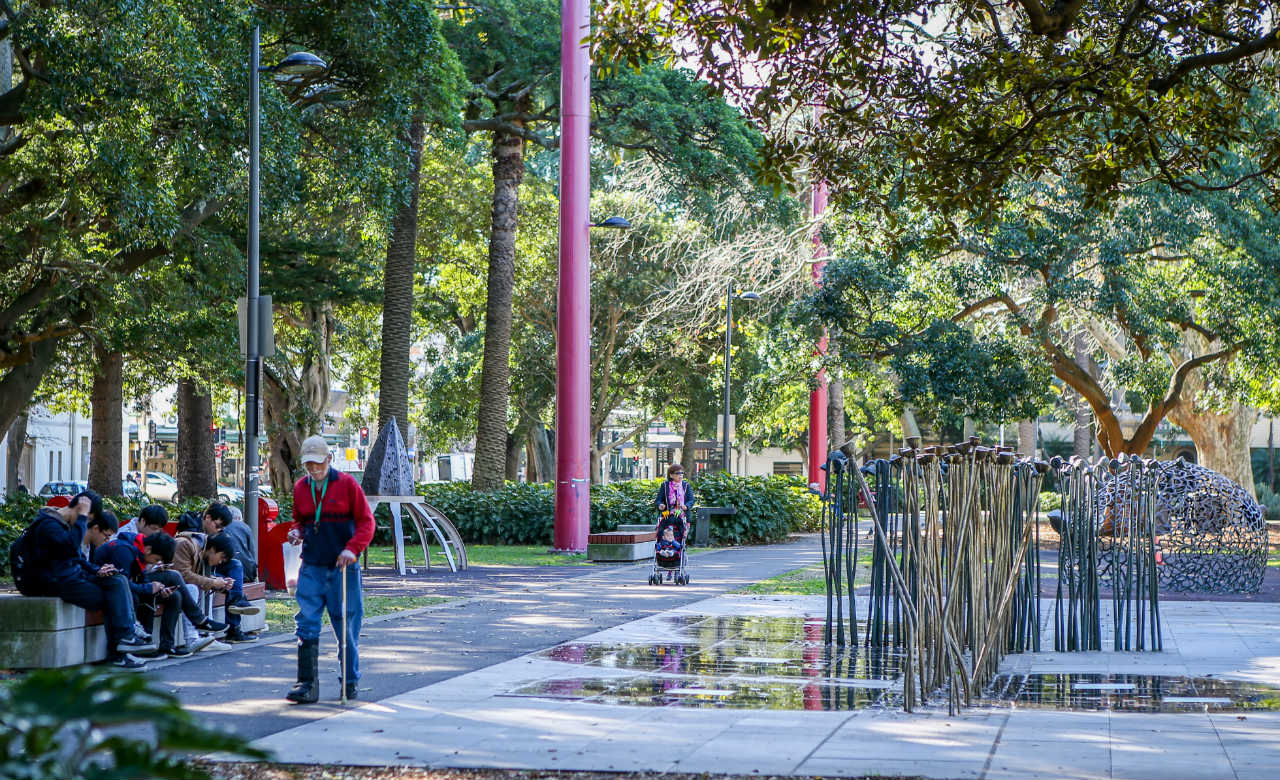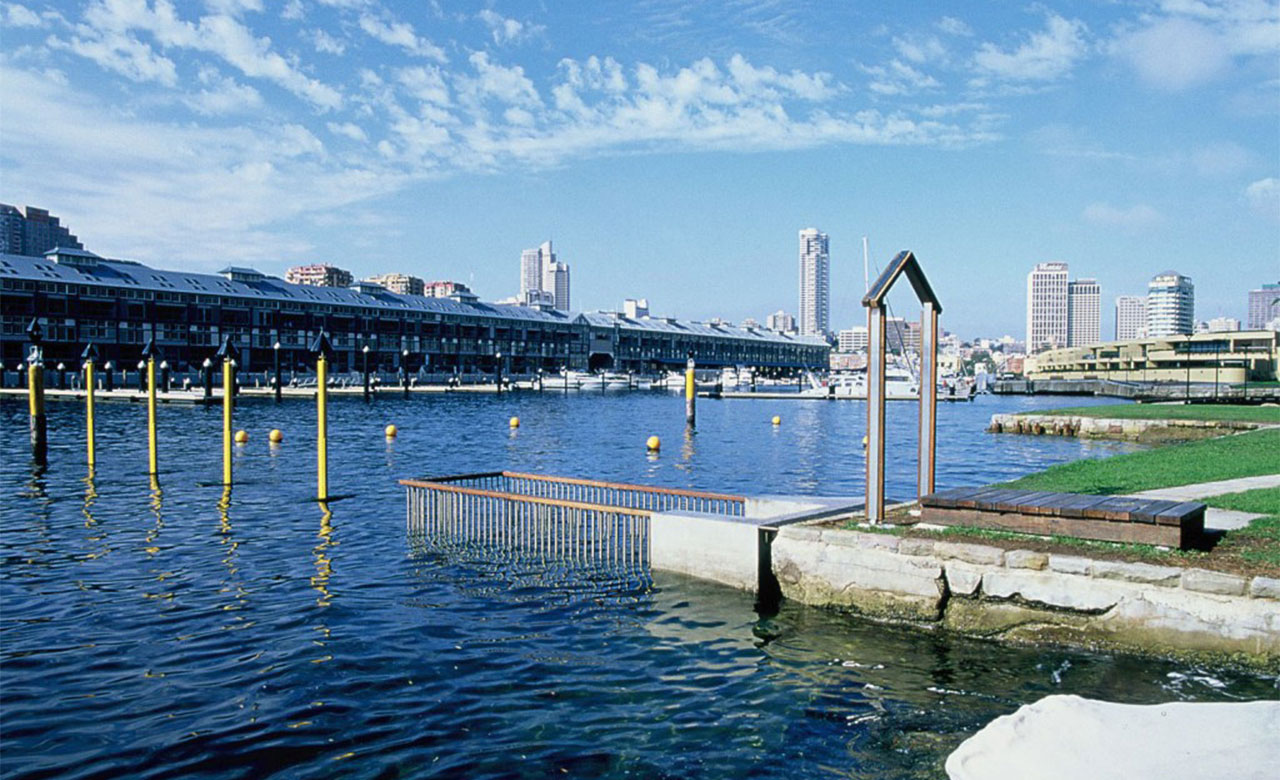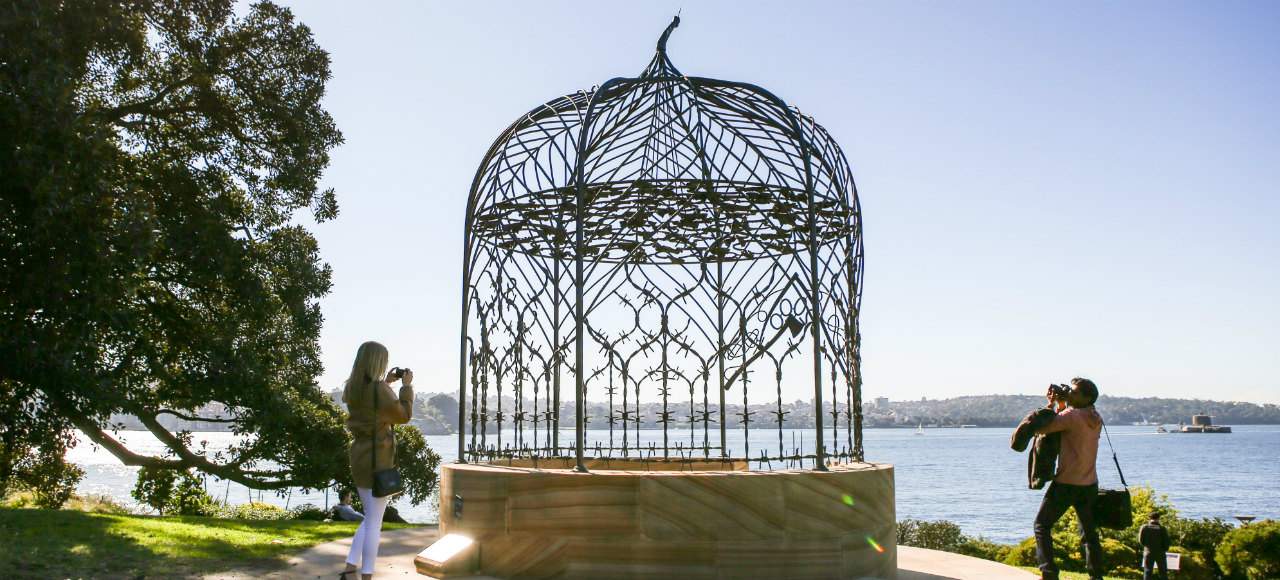Five Sydney Artworks You Probably Take For Granted
You might have walked right by these masterpieces.
In partnership with
If you've a hankering for a culture injection, but can't afford to hit up every blockbuster exhibition that rolls into town, just look a little harder in the streets around you. There's art literally everywhere and we don't mean 'art' like the wisp of a cloud or the smile of a baby, but tangible, meaningful art that crowds the streets without our noticing. We can still be guilty of thinking of art as picture frames on walls in a white cube gallery, but these installation pieces in the City Art Collection defy the stereotype and crop up where you least suspect them.

Caroline Rothwell, Youngsters (2012). Image: Katherine Griffiths.
YOUNGSTERS - CAROLINE ROTHWELL
The CBD is always jam-packed with people, so you'd be forgiven if you locked eyes on Caroline Rothwell's sculpture piece Youngsters, put your headphones in and kept on walking. The duo of bronze statues stands on the northern side of Barrack Street on the corner of Barrack and George Street and portrays two small figures in hoodies. On closer inspection you'll notice the figures are actually children, with plaits under their hoodies , one standing and one hand standing. Rothwell's sculptures are classically proportioned but make a comment on contemporary urban stereotypes while cutting through the noise of the busy district with their diminutive but sinister stance.

Fiona Foley, Bibles and Bullets (2008). Image: Katherine Griffiths.
BIBLES AND BULLETS - FIONA FOLEY
Prolific Brisbane-based installation artist Fiona Foley is the mind behind Bibles and Bullets, an interactive playscape for children installed in Redfern Park. Her work manages to be a playground and a piece of art with a lesson in Indigenous bush tucker, as her metal sculptures reference seeds from the local area. The individual elements of the park are laden with meaning. Intuitive Play creates climbing frames in the shape and texture of seed pods (wrinkly nut, mangrove seed and yam seeds) while Lotus Line is an interactive water feature made from a splay of lotus flowers in the shape of a crucifix, a comment on the colonisation of Indigenous lands to be read in the context of salient quotes from Paul Keating and an inscription commemorating artist Michael Riley engraved in the pavement near the park.

Robyn Bracken, The Archaeology of Bathing (1999). Image: City of Sydney.
ROBYN BACKEN - THE ARCHAEOLOGY OF BATHING
You may have looked at Robyn Backen's piece The Archaeology of Bathing in Woolloomooloo Bay and mistook it as part of a (very odd) dock. It's actually a tribute to the traditional use of Woolloomoolloo Bay: bathing. Since the time the Gadigal people were the only inhabitants of the land and right through to 1955, the bay was used as a big bath for all and sundry. Of course, ladies and gents had separate bathing facilities (because of modesty and all that). The metal enclosure represents protection from not only sharks but also the shark-like attention of Peeping Toms.

Herbert Flugelman, Dobell Memorial Sculpture (1979). Image: Paul Patterson, City of Sydney.
DOBELL MEMORIAL SCULPTURE - FLUGELMAN
Herbert Flugelman's sculpture stands proudly on the intersection of Bond, Spring and Pitt Street in the CBD, and upon previous inspection you might have thought it a tribute to, say, shiny things or a neat stack of energised tesseracts, but you'd be wrong. The sculpture is called the Dobell Memorial Sculpture and it represents a man named Sir William Dobell, one of Australia's most prized landscape and portrait artists. Dobell won the Archibald Prize three times and was knighted in 1966 (a very worthy subject for an abstract memorial). Flugelman, the artist, is renowned for his concentric, geometric sculptural work. So now, when you stroll past the glinting, glorious memorial sculpture, you can break out some esoteric as heck facts to wow your pals.

Fiona Hall, A Folly for Mrs Macquarie (1999). Image: Katherine Griffiths.
A FOLLY FOR MRS MACQUARIE - FIONA HALL
In the Royal Botanic Gardens, looking east over the harbour, you'll find a cast iron gazebo that's part bird cage and part Elven masterpiece. Its accurate title, as defined by artist Fiona Hall, is a 'folly' – a costly, ornamental structure with no practical purpose. It's a dig at Lachlan Macquarie, the governor of Sydney from 1810-1821, who tried to impose a neoclassical order to the city that staunchly resisted it. It's an allegory for the rigid way Britain colonised Australia (another folly in the artist's view) and attempted to impose their values on society along with their taste in architecture The flowery style of the folly is, upon closer inspection, made up of native plant and animal species (that were bred out of the harbour by foreign species) and barbed wire that divided the land. A Folly For Mrs Macquarie is a superficially pretty structure with a powerful message about colonisation.
Want more Sydney art? Let's go find five hidden artworks around the city.






